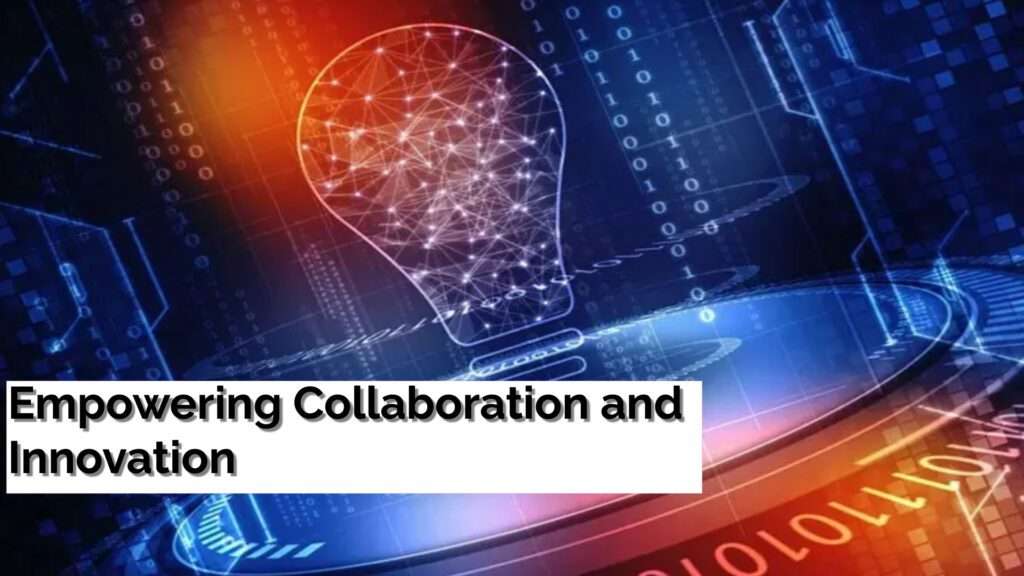
Table of Contents
Introduction: The power of Single Source Technology
Welcome, fellow tech enthusiasts! Today, we embark on a journey into the realm of the power of single source technology. Picture this: a seamless digital landscape where all your needs are met from one unified source. Intrigued? You should be! In this blog post, we’ll dive deep into the concept of single source technology, exploring its significance, benefits, and how it’s revolutionizing the way we interact with the digital world.
Understanding the power of Single Source Technology
So, what exactly is single source technology? Simply put, it’s a paradigm where various digital functionalities are integrated into a singular platform or system. Think of it as a one-stop-shop for all your technological requirements. Whether it’s communication, data storage, project management, or collaboration tools, single source technology consolidates them into a cohesive ecosystem, eliminating the need to juggle multiple applications.
In essence, single source technology operates on the principle of consolidation and efficiency. By centralizing disparate functions into a unified platform, it streamlines workflows, enhances productivity, and simplifies user experiences. No more hopping between different apps or dealing with compatibility issues – everything you need is readily accessible from a single source.
The Benefits of Single Source Technology

Now that we grasp the concept, let’s delve into the myriad benefits it offers. First and foremost, single source technology fosters synergy and cohesion within digital environments. By integrating various tools and functionalities, it promotes seamless interaction and data flow across different facets of an organization. This cohesion not only enhances productivity but also cultivates a sense of unity and collaboration among team members.
Furthermore, single source technology eliminates redundancies and inefficiencies that often plague fragmented systems. Instead of investing time and resources in managing multiple platforms, organizations can focus their efforts on optimizing a single, comprehensive solution. This translates to cost savings, reduced administrative overhead, and more efficient resource allocation.
Navigating the Single Source Landscape
As with any technological shift, navigating the single source landscape requires careful consideration and strategic planning. Before adopting a single source solution, organizations must assess their specific needs, objectives, and existing infrastructure. Conducting a thorough analysis will ensure that the chosen platform aligns with the organization’s goals and integrates seamlessly with existing systems.
Moreover, it’s essential to evaluate the scalability and flexibility of single source technology. As organizations grow and evolve, their technological requirements may change. Therefore, opting for a solution that can adapt and scale alongside the organization is crucial for long-term success. Additionally, consider factors such as data security, compliance, and vendor reputation when selecting a single source platform.
Empowering Collaboration and Innovation

One of the most significant advantages of power of single source technology is its ability to empower collaboration and innovation. By providing a unified platform for communication, project management, and document sharing, it breaks down silos and facilitates cross-functional collaboration. Team members can seamlessly collaborate on projects, share ideas, and access relevant information in real-time, regardless of their location or department.
Moreover, single source technology serves as a catalyst for innovation by fostering an environment conducive to experimentation and exploration. With all the necessary tools and resources at their fingertips, employees are empowered to think outside the box, explore new ideas, and drive innovation within their respective domains. This not only enhances the organization’s competitive edge but also cultivates a culture of creativity and forward thinking.
Enhancing User Experience
In today’s digital age, user experience reigns supreme. Whether it’s a customer interacting with a product or an employee navigating internal systems, seamless and intuitive user experiences are non-negotiable. Power of Single source technology plays a pivotal role in enhancing user experience by providing a unified interface and consistent user journey across different functionalities.
Gone are the days of learning multiple interfaces or struggling to switch between disparate systems. With single source technology, users enjoy a cohesive and intuitive experience, where navigation is seamless, and features are easily accessible. This not only boosts user satisfaction but also improves adoption rates and reduces training overhead.
Addressing Challenges and Considerations
While power of single source technology offers a plethora of benefits, it’s not without its challenges and considerations. One of the primary concerns is the risk of vendor lock-in, where organizations become overly dependent on a single provider for their technological needs. To mitigate this risk, organizations should prioritize interoperability and data portability when selecting a single source platform.
Additionally, organizations must be vigilant about data security and privacy implications associated with single source technology. Centralizing sensitive information within a single platform increases the potential impact of security breaches or data leaks. Therefore, implementing robust security measures and compliance protocols is imperative to safeguarding sensitive data and maintaining regulatory compliance.
Future Trends and Innovations

As technology continues to evolve at a rapid pace, the landscape of power of single source technology is poised for further innovation and advancement. From artificial intelligence and machine learning to augmented reality and blockchain, emerging technologies will continue to reshape the capabilities and functionalities of single source platforms. Moreover, the proliferation of cloud computing and edge computing will unlock new possibilities for scalability, performance, and accessibility.
Furthermore, the convergence of digital and physical experiences will drive the development of immersive and interactive interfaces, blurring the lines between the virtual and real worlds. Whether it’s virtual meetings, augmented reality simulations, or IoT-enabled environments, the future of single source technology promises to be both exciting and transformative.
Also Read: WHAT IS THE CRITICAL TECHNOLOGY ELEMENTS IN 2024
Conclusion: Embracing the Single Source Revolution
In conclusion, power of single source technology represents a paradigm shift in how we interact with the digital world. By consolidating disparate functionalities into a unified platform, it streamlines workflows, enhances collaboration, and empowers organizations to innovate and thrive in an increasingly competitive landscape. However, navigating the single source landscape requires careful planning, consideration, and a commitment to addressing challenges and embracing opportunities for growth and evolution.
As we embark on this journey of digital transformation, let us embrace the power of single source technology and unlock new possibilities for productivity, efficiency, and innovation. Together, we can shape a future where technology serves as a catalyst for positive change and enables us to achieve our goals and aspirations.
FAQs (Frequently Asked Questions) About Single Source Technology
Q: What is single source technology? A: Single source technology refers to a paradigm where various digital functionalities are integrated into a singular platform or system. It consolidates disparate tools and functionalities into a cohesive ecosystem, streamlining workflows and enhancing productivity.
Q: What are the benefits of single source technology? A: Single source technology offers numerous benefits, including improved efficiency, enhanced collaboration, cost savings, simplified user experiences, and increased innovation. By centralizing digital functionalities, it eliminates redundancies and inefficiencies, fostering synergy and cohesion within organizations.
Q: How does single source technology enhance collaboration? A: Single source technology empowers collaboration by providing a unified platform for communication, project management, and document sharing. It breaks down silos, facilitates cross-functional collaboration, and enables team members to work together seamlessly, regardless of their location or department.
Q: What considerations should organizations keep in mind when adopting single source technology? A: When adopting single source technology, organizations should consider factors such as scalability, flexibility, interoperability, data security, and compliance. It’s essential to assess the organization’s specific needs, objectives, and existing infrastructure to ensure a seamless transition and long-term success.
Q: What are the potential challenges associated with single source technology? A: One potential challenge is the risk of vendor lock-in, where organizations become overly dependent on a single provider for their technological needs. Additionally, centralizing sensitive information within a single platform raises concerns about data security and privacy, necessitating robust security measures and compliance protocols.
Q: How can organizations mitigate the risk of vendor lock-in with single source technology? A: Organizations can mitigate the risk of vendor lock-in by prioritizing interoperability and data portability when selecting a single source platform. By choosing solutions that support open standards and seamless integration with third-party systems, organizations can avoid being locked into a single vendor.
Q: What future trends and innovations can we expect in the field of single source technology? A: The future of single source technology is poised for further innovation and advancement, driven by emerging technologies such as artificial intelligence, machine learning, augmented reality, and blockchain. Additionally, the convergence of digital and physical experiences will unlock new possibilities for immersive and interactive interfaces.
Q: How can organizations prepare for the future of single source technology? A: To prepare for the future of single source technology, organizations should stay abreast of emerging trends and technologies, invest in ongoing training and development for employees, and cultivate a culture of innovation and adaptability. By embracing change and proactively seeking out opportunities for growth and evolution, organizations can position themselves for success in an increasingly digital world.
Q: Is single source technology suitable for all types of organizations? A: While single source technology offers numerous benefits, its suitability depends on the specific needs, objectives, and existing infrastructure of each organization. Small, medium, and large enterprises across various industries can benefit from single source technology, provided that it aligns with their strategic goals and enhances their operational efficiency.






